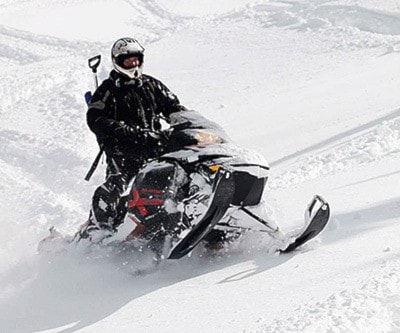After four avalanche fatalities in the past six days, the Canadian Avalanche Centre (CAC) urges backcountry users to make cautious and conservative decisions while in avalanche terrain.
“We’ve been dealt a pretty troublesome snowpack this season and our terrain choices need to reflect that fact,” says CAC’s Public Avalanche Warning Service manager Karl Klassen said on March 13.
“The weak layers we’ve been tracking for many weeks remain a significant problem and areas where you might have felt safe in previous seasons may not be the best choices this winter.”
Two of the recent fatal snowmobile accidents occurred in cut-blocks – areas below tree line cleared by logging companies, Klassen noted.
“Often, riding below tree line can be a safer choice in terms of avalanche danger. But with the current warm temperatures and wet snow at low elevations, that’s not the case at this time.
“Riders need to be wary of avalanche terrain even near valley bottom, at least until a solid freeze occurs.”
Until conditions improve, the CAC recommends travelling on small, simple and low-angle terrain with no terrain traps. Exposure to large slopes and cornices above should also be avoided whenever possible.
It’s also critical that all backcountry users are equipped with essential safety equipment for avalanche terrain, Klassen added.
“Everyone in the party needs an avalanche transceiver, a probe and a shovel every day, regardless of expected conditions. And it’s equally vital that everyone is familiar with has practised using this equipment. If an avalanche occurs, there is no time to go for help.”
The critical window for finding and extricating a victim is just 10 minutes, when there is an 80 per cent chance of survival. The odds drop dramatically after that. At just 35 minutes, there’s a less than 10 per cent chance of survival.
In addition to the essential equipment, airbags are recommended. But as with any piece of safety equipment, it’s vital to have practiced its operation and to ensure it is tested and in good working order before going into avalanche terrain.
For further information on the current conditions, see the CAC Forecaster’s Blog page at: http://blogs.avalanche.ca/category/forecaster-blog/.
The CAC South Rockies blog has excellent posts with video that’s applicable to many other regions of the province: http://blogs.avalanche.ca/category/southrockies/.
